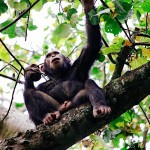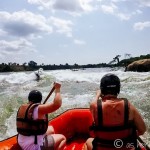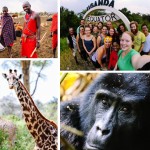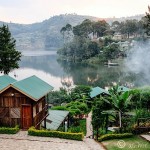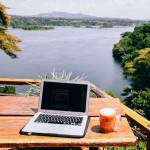Chances are that if you’ve booked a trip to Uganda, you plan to visit gorillas in the wild.
Gorillas live in only a few countries — Uganda, Rwanda, and the Congo are primary locations. And while gorillas normally fear or avoid humans, many troops in these countries have become habituated to human proximity and consider them neutral beings in their environment. This makes trekking with gorillas possible.
One thing that might come as a surprise to travelers is the permit price of this trek… at $660 USD per person in Uganda, it’s the most expensive hike you’ll ever go on. (It’s around $750 in Rwanda.) That cost has gone up dramatically in recent years but with good cause: these funds are used to protect the gorillas in the park, as there is no government financial support. Steep prices also limit the number of annual visitors which, in the end, is better for the gorillas.
Important note for anyone considering this activity: there are months of the year when the gorilla trekking permit is considerably lower. In off-season months it drops by nearly half, such as right now — in November 2014 the permit price is $350 for non-residents. (FYI: the rainy season in Uganda is March-May… it might be cheaper then, but your trek will be a wet one.)
Let’s move on to the actual trek! Our day begins bright and early at Lake Bunyonyi when vans pick up our group around 5am to depart for Bwindi Impenetrable Forest (coolest name ever). Check out the moody mist:
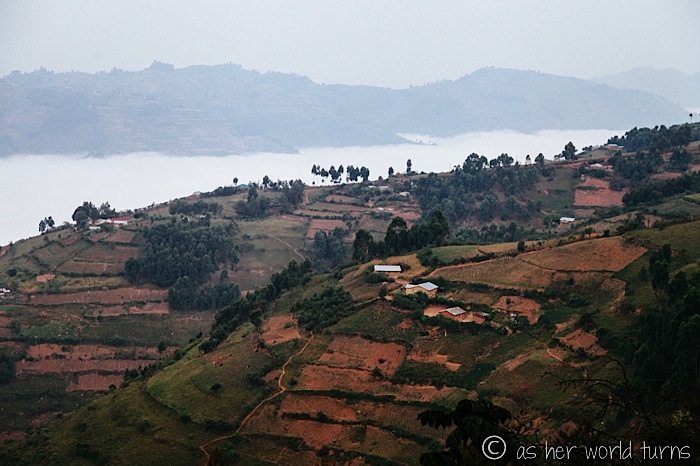
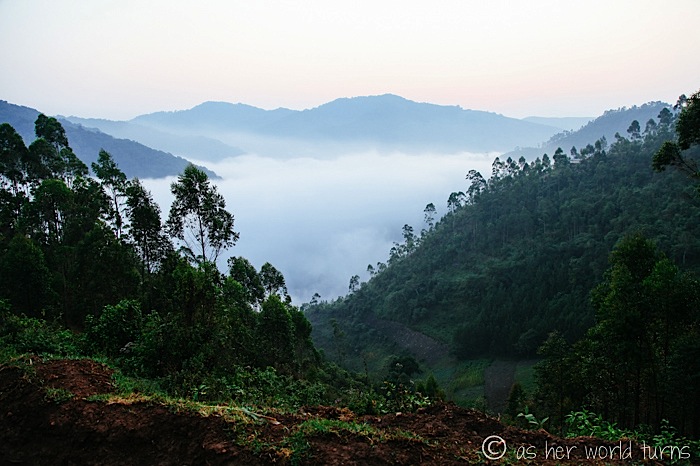
The ride here is a bumpy one on a single-land dirt road, and our driver has a lead foot. Here’s some footage (which I did not speed up — that’s exactly how fast he was going):
Around two hours later we arrive at the national park, an UNESCO World Heritage Site.
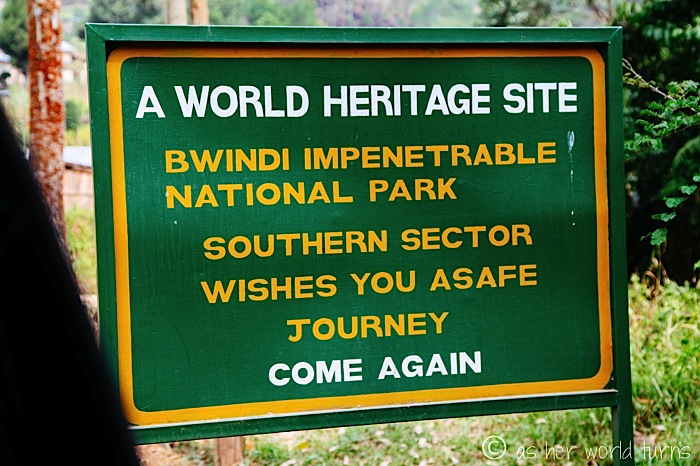
Some gorilla facts:
Mountain gorillas are critically endangered — there are only around 700 left in the world, half of which are in the Bwindi Impenetrable Forest. (For comparison, there are around 100,000 lowland gorillas in the Congo.)
Gorillas have about 97% of the same DNA as humans.
They are vegetarians.
Their average lifespan is 35 years old (longer in captivity).
Gorillas are susceptible to human illnesses so we’re advised to skip this adventure if we’re under the weather (no refund however).
Adults range from 300 to 500 lbs. and four to six feet tall.
Each troop or band of gorillas contains one dominant male, several females, and young gorillas of both genders — roughly one or two dozen creatures total.
The gestation period for gorillas is 8.5 months.
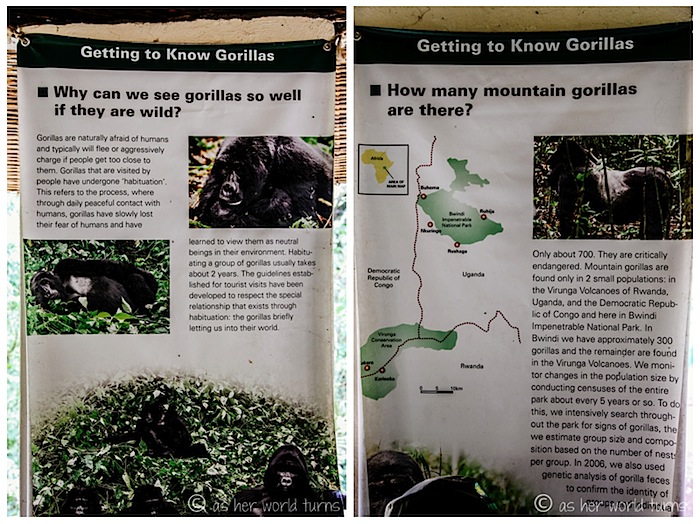
How does one dress for gorilla trekking? It’s advisable to bring rubber boots to better navigate mud. And gloves to protect hands in the jungle terrain (these are also helpful for pulling oneself up a dense hillside, grabbing vines and roots). Bring a water resistant outer layer — you’ll likely encounter mist and light rain. Long sleeves are a good idea to avoid scratches. And pack a good amount of food and drinking water since you don’t know how long it’ll take to find the gorillas.
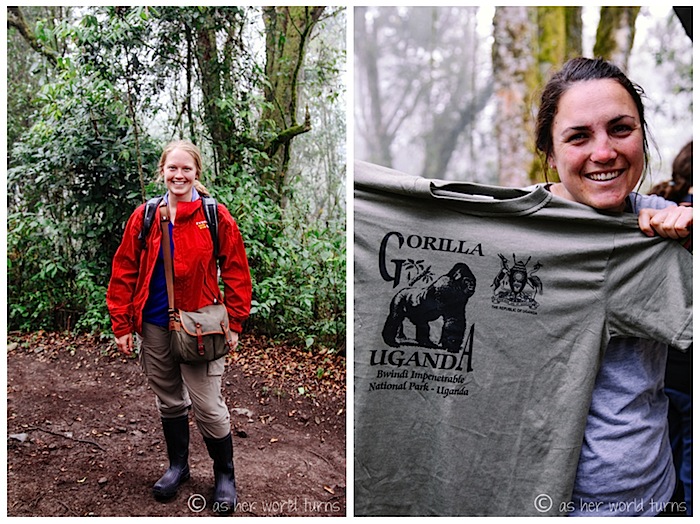
They sell t-shirts for around $15 USD. I think if you’re paying $660 for the hike they should throw the shirt in for free…
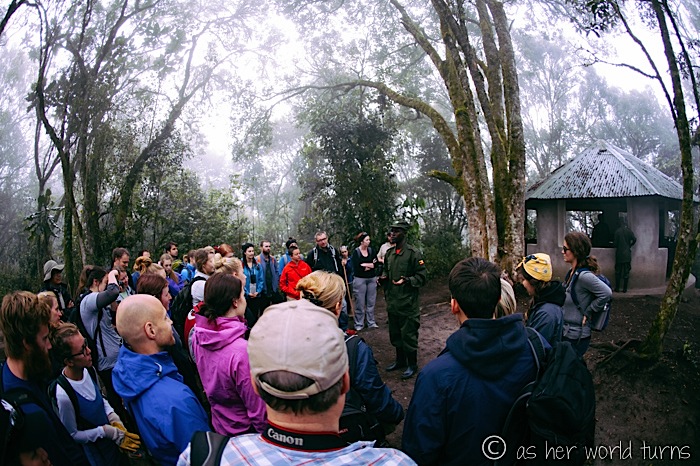
Before we split into smaller groups for trekking (maximum eight people), a guide explains the rules. We’ll hike for however long is necessary to reach the gorillas (rangers will go ahead of the groups and communicate via walkie talkie when they find them). It may take four hours or it may take 40 minutes. Whatever trail we take to get to the gorillas, we’ll go back the same way — so the trek could take up to eight hours round-trip.
Once we reach the band of gorillas, we’ll spend one hour with them — observing their behavior and taking photos and video.
There is no guarantee that we’ll see gorillas, but they are closely monitored and from what I gather, no one walks away from this experience disappointed.
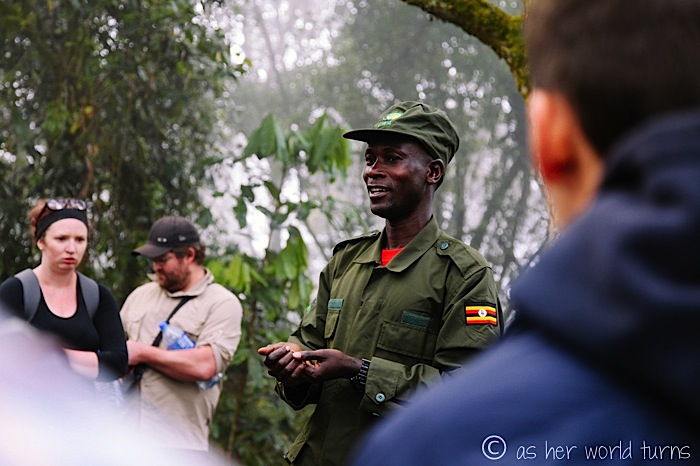
Here’s our smaller trekking group:

Everyone heads off in different directions with their guides and guards carrying guns (just in case something were to go very wrong).
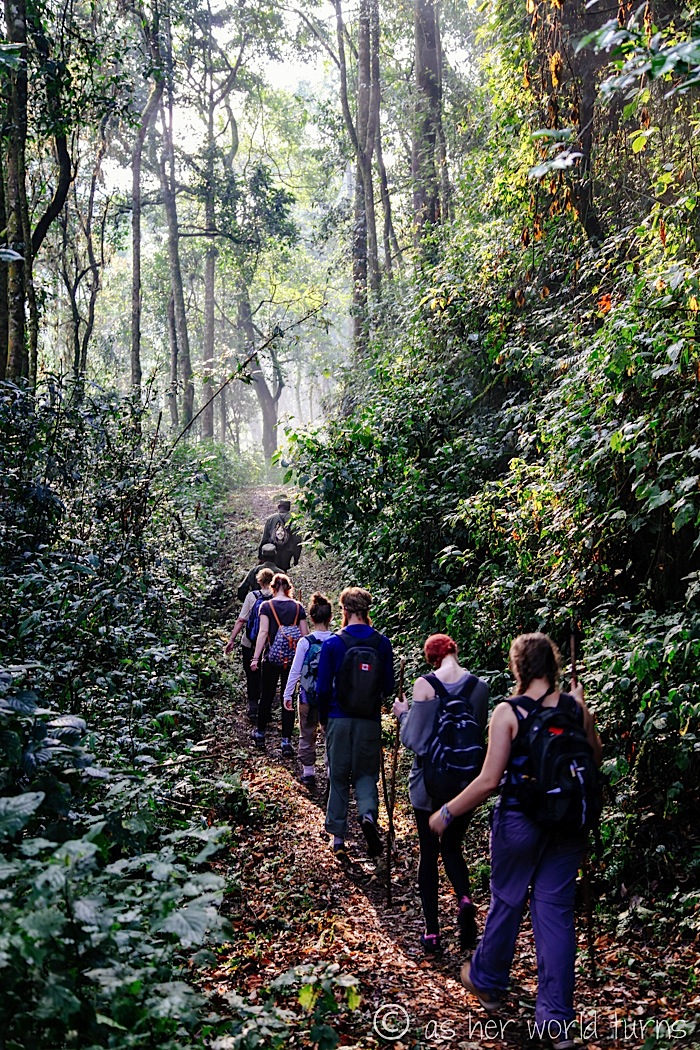
The trail starts out easy enough, but before long it becomes clear how this impenetrable forest earned its name.
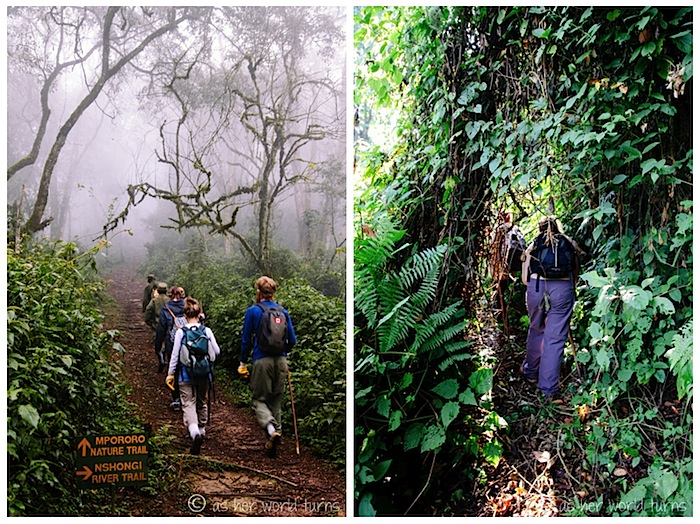
We spots a few giant worms:
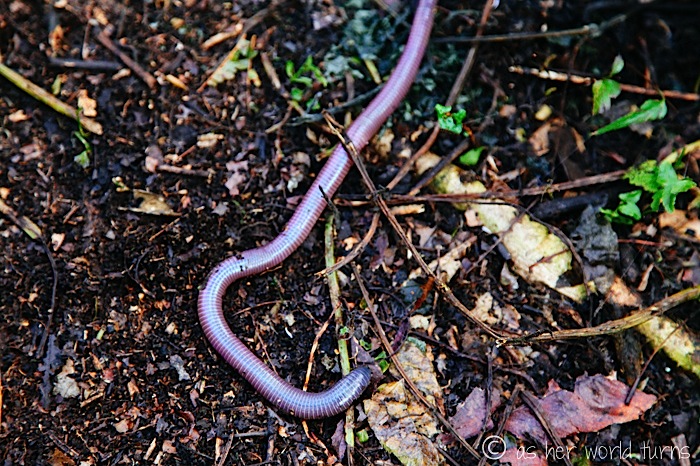
And piles of hundreds of ants:

This ranger below steps into an elephant footprint. We don’t see any pachyderms today but they make their presence known with these prints. In the photo below right, a flying squirrel peeks out from his home inside a tree trunk.
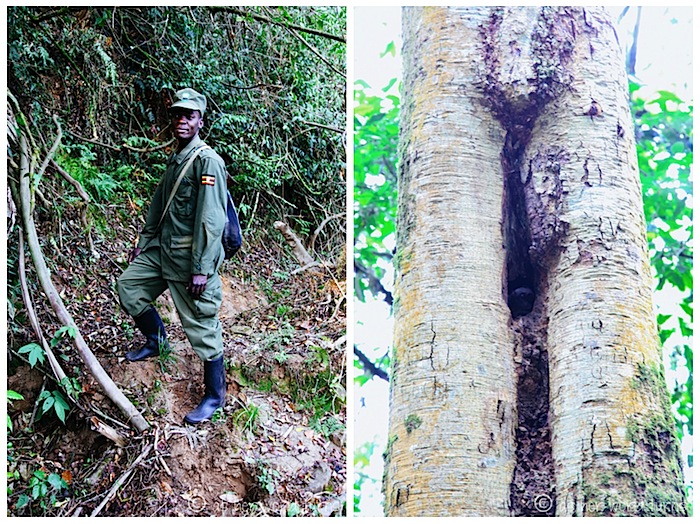
Eventually we get word that gorillas have been spotted about 45 minutes away. We veer up a steep hillside as men with machetes bushwhack a trail for us.


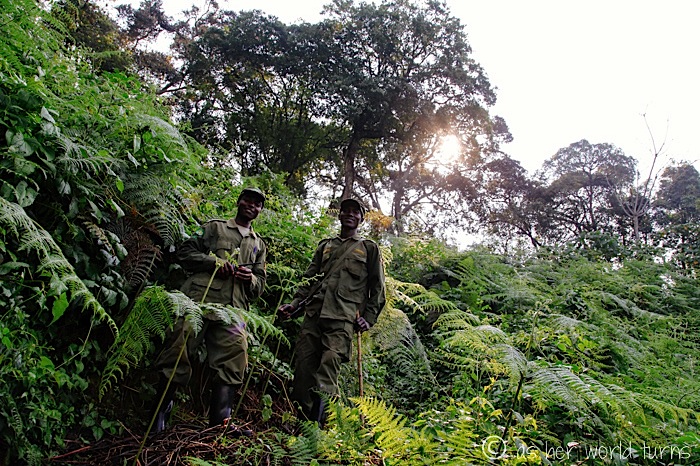
Our guides show off their smiles:

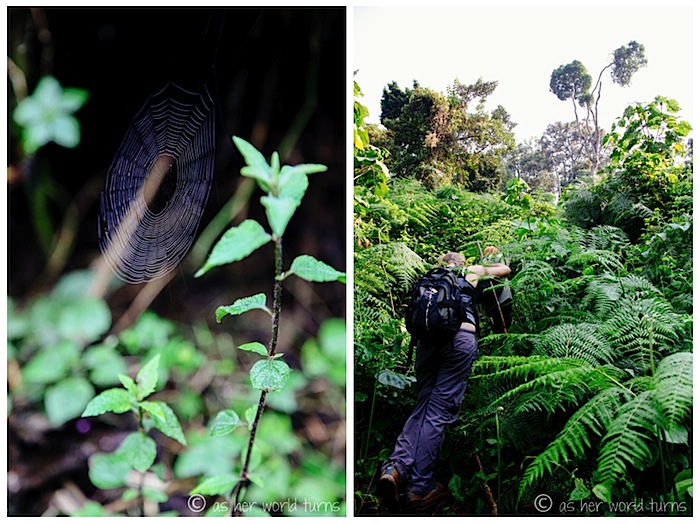
After climbing up to a ridge, we head back down the other side…

… and we find our band of gorillas! Can you spot one sitting in the tree?
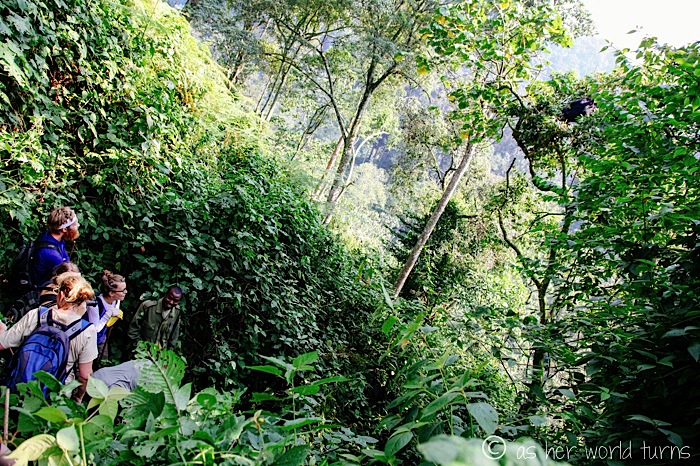
These are two of the men who went ahead to track to gorillas and then stayed with them until we caught up.

Our time with the gorillas has officially begun — we get exactly one hour with them before we have to turn back.
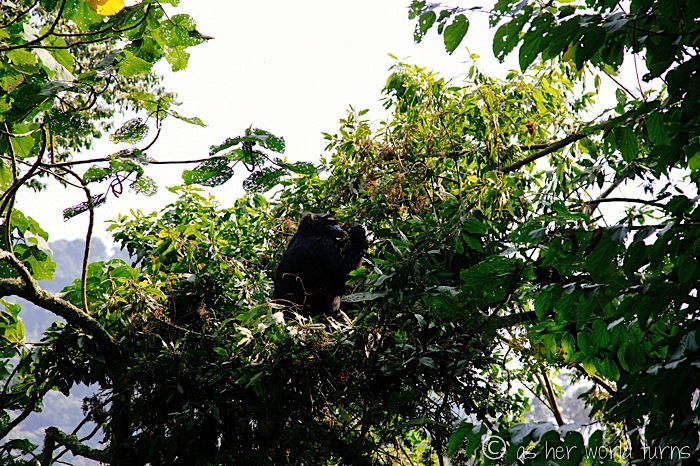
It’s clearly meal time as each one perches on a branch and chomps leaves.

Occasionally they glance at us (I try to capture those looks on camera) but for the most part they don’t seem to care one way or another about our presence and go about their business eating greens.
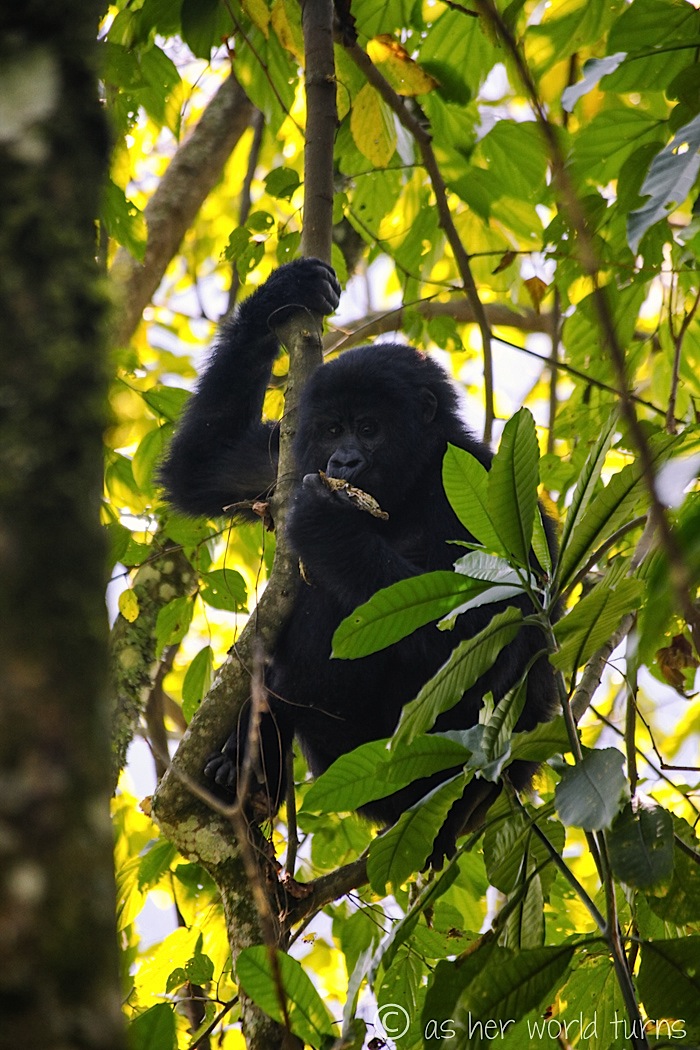
There are mostly females and a few young ones.

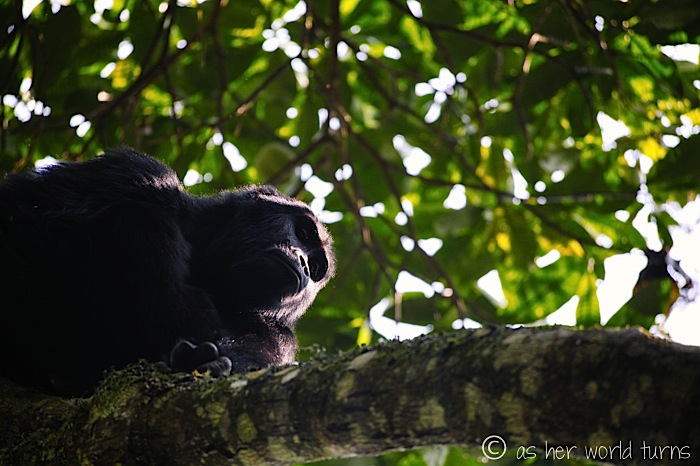
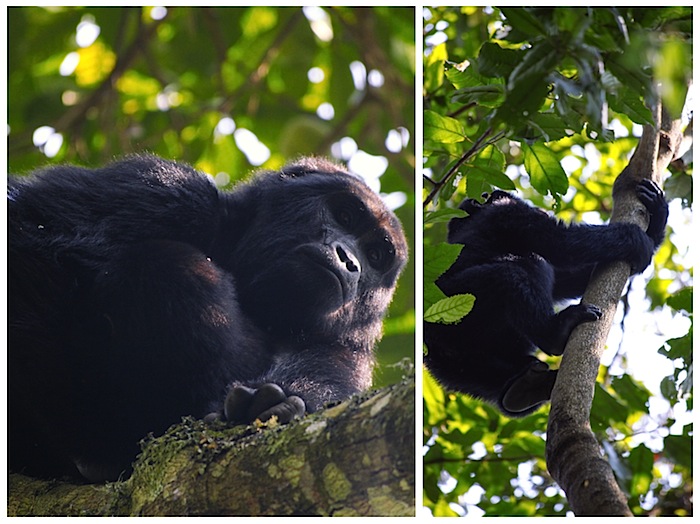
Only one adult male — a giant silverback gorilla in all his splendor — is with the group. Unfortunately he’s occupied eating leaves way up in the higher reaches of a tree (see below) so we’ll only get a good glimpse near the end of our visit.

It’s hard to tell from where he’s sitting, but can you see why they call the the males silverbacks? It turns that color when they reach maturity around age 13. That white hair in the photo below is so striking against his otherwise black coloring.

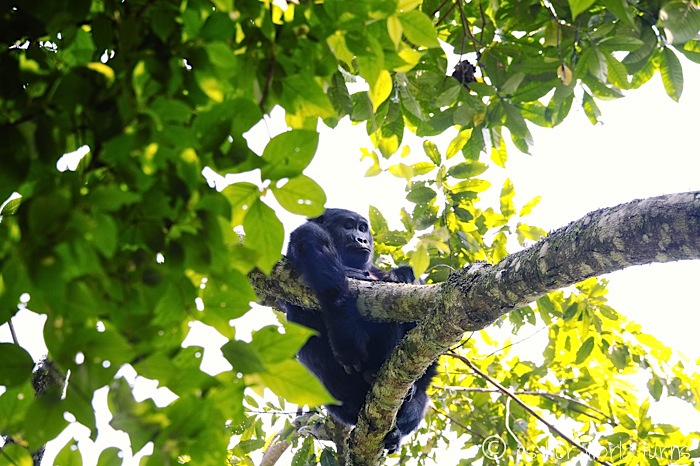
The rangers help spot other members of the band and wave us over when they find one nearby. This next gorilla is the one we get closest to during the whole hour and it’s utter magic to be in such proximity. While she ignores us for the most part, every once in awhile she looks up and it’s like staring into the eyes of an old soul: calm, wise, and all-knowing.

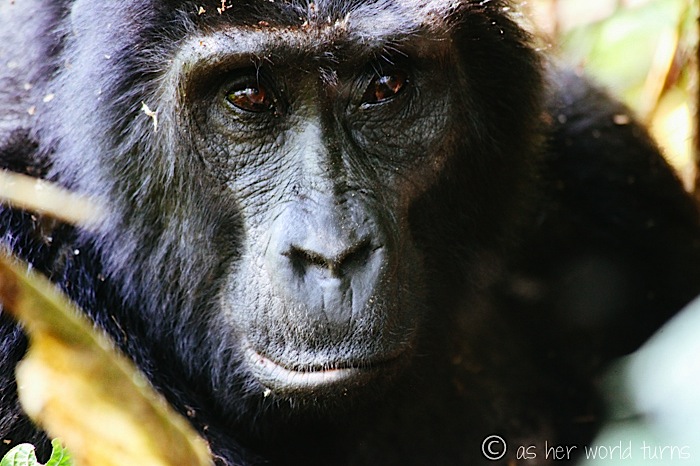
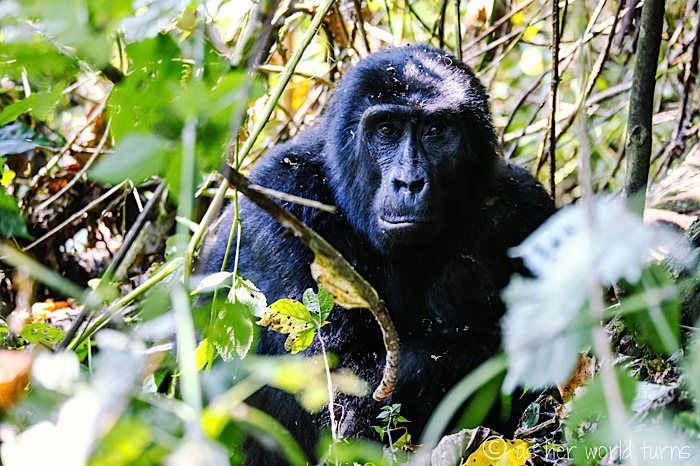
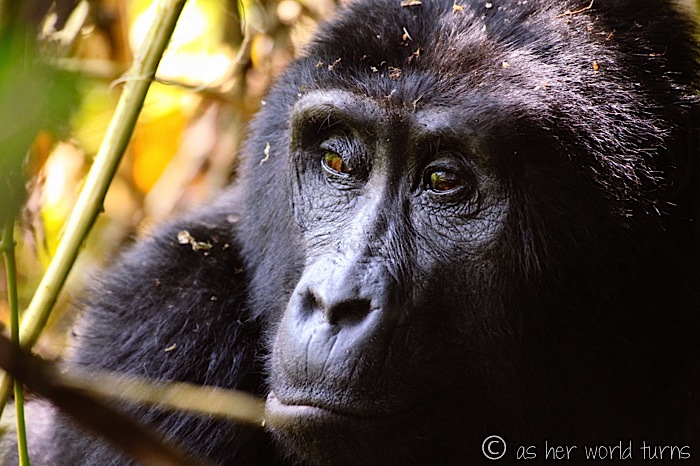
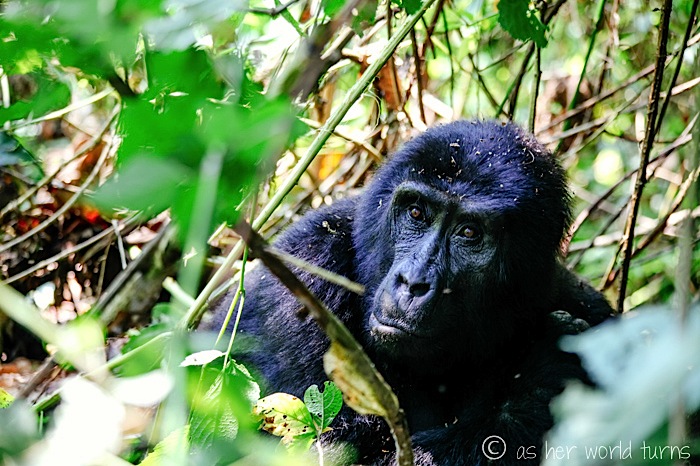

The rules are (if I remember correctly) that we’re supposed to be at minimum 10 feet away from the gorillas. Of course the gorillas aren’t aware of this rule so sometimes they might get closer to us on their way to a tasty branch of leaves.
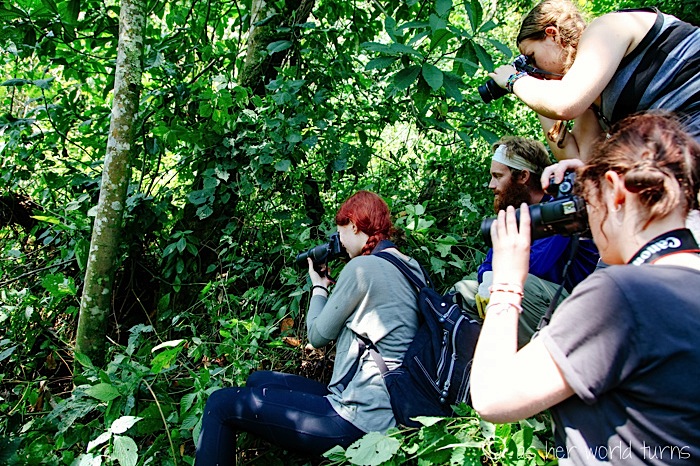


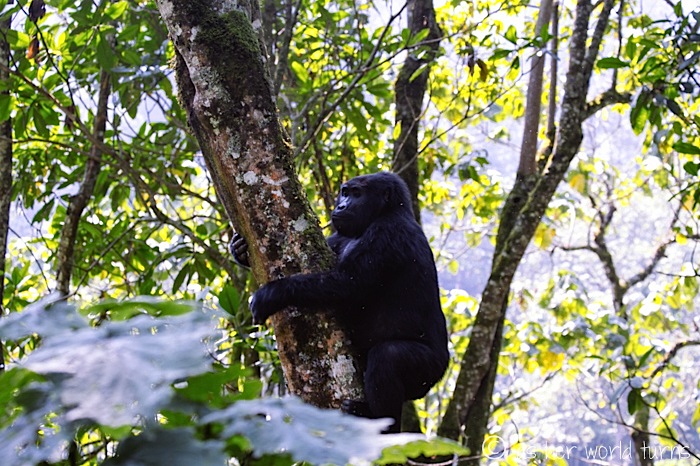

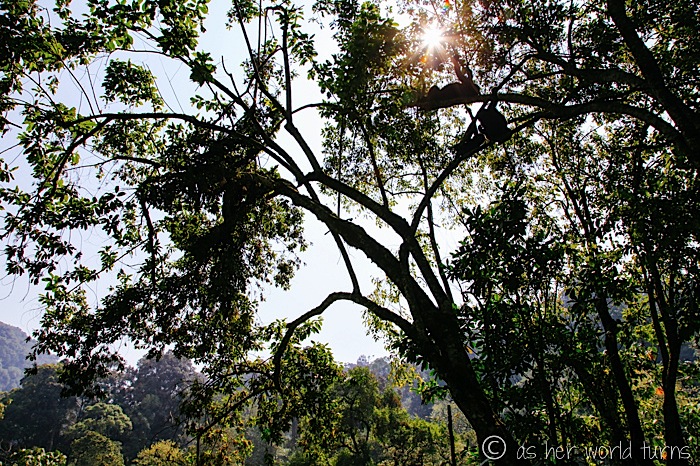
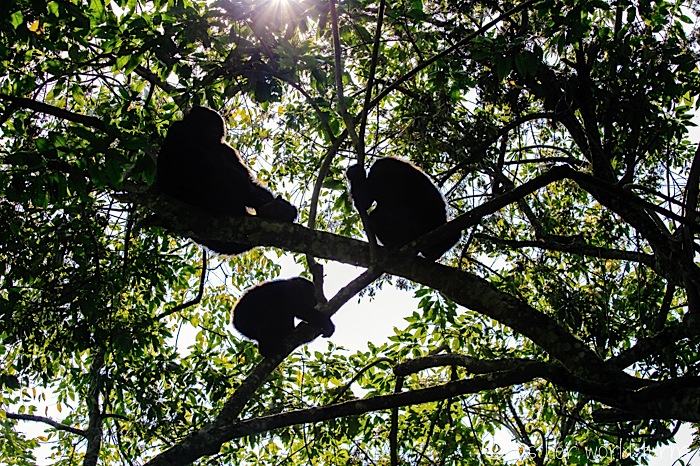
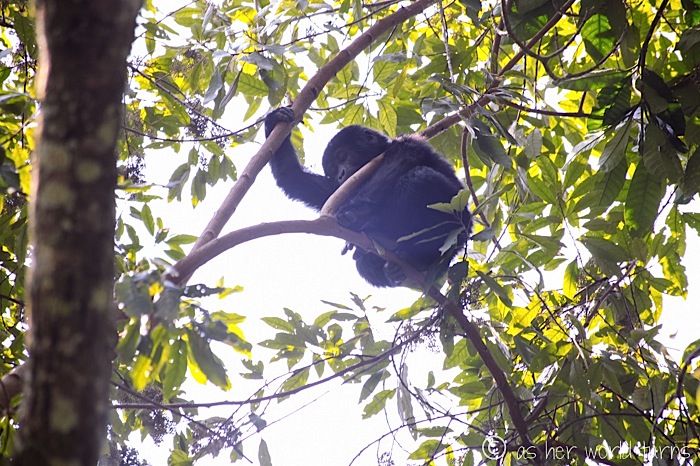
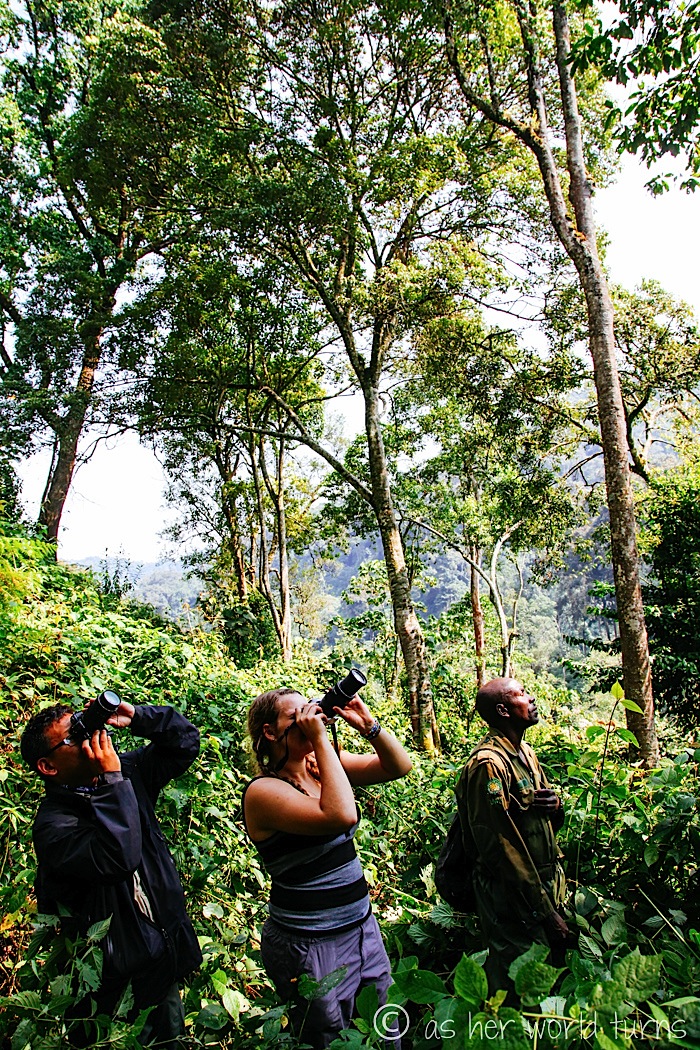
I’d like to point out the ogre-like fingers on the gorilla below — what fascinating hands:
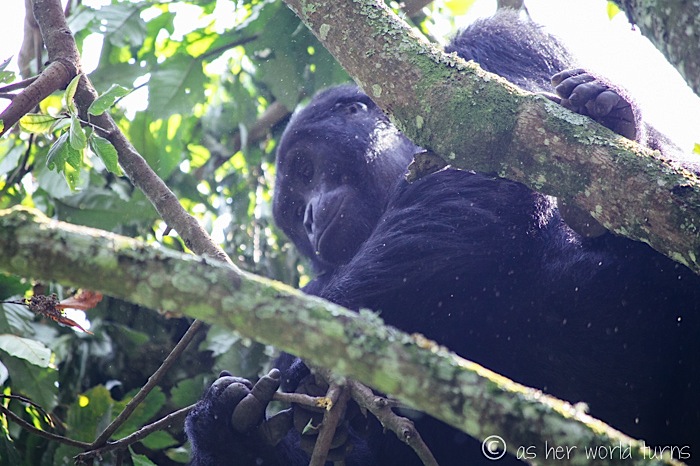
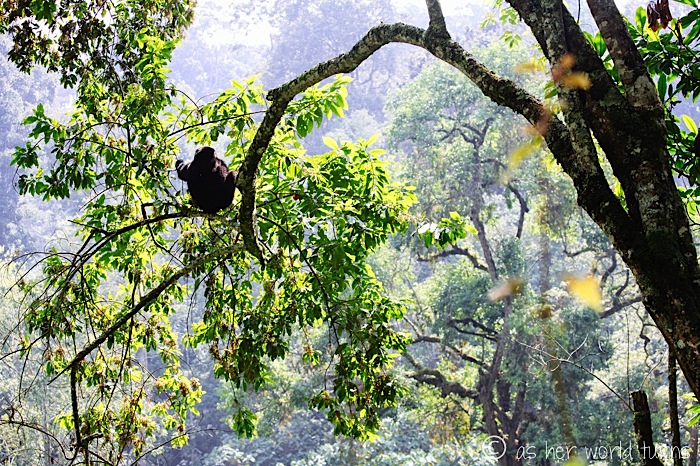
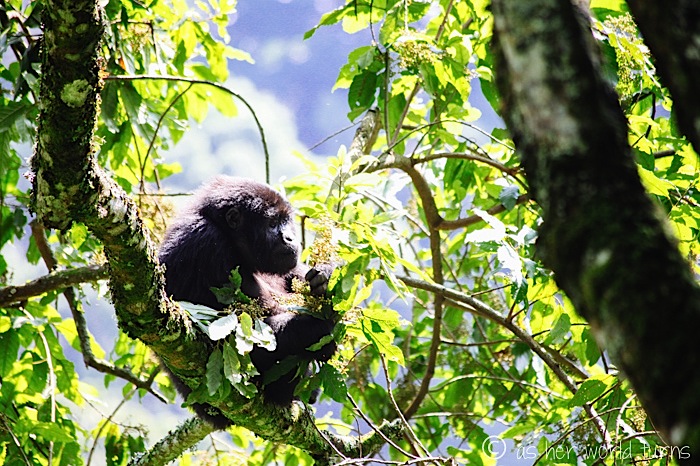
Finally the male silverback gorilla turns away from his perch and graces us with a full view.
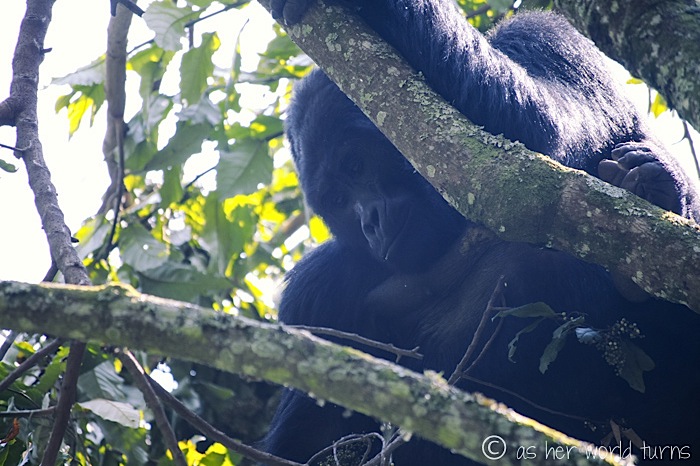
He effortlessly swings his oversized body around the tree. I struggle to get both photos on my DSLR camera and video on my little point and shoot.
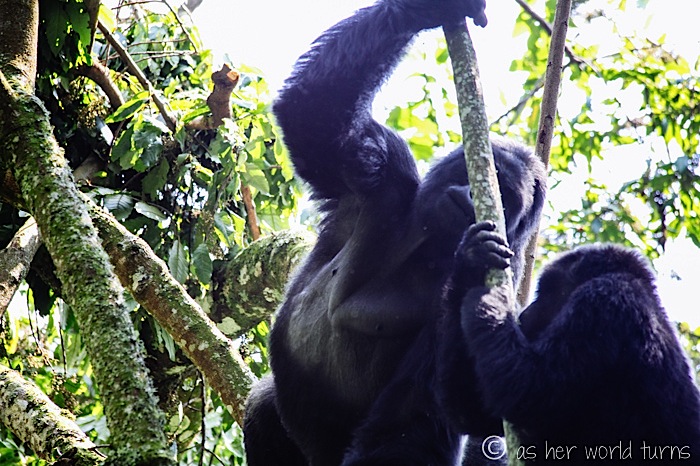
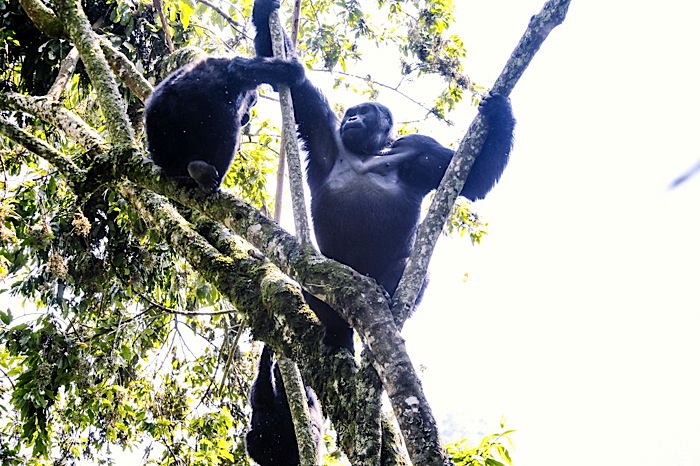
By now we only have about ten minutes left of the allotted hour left. We spend them with a mama gorilla and her toddler.
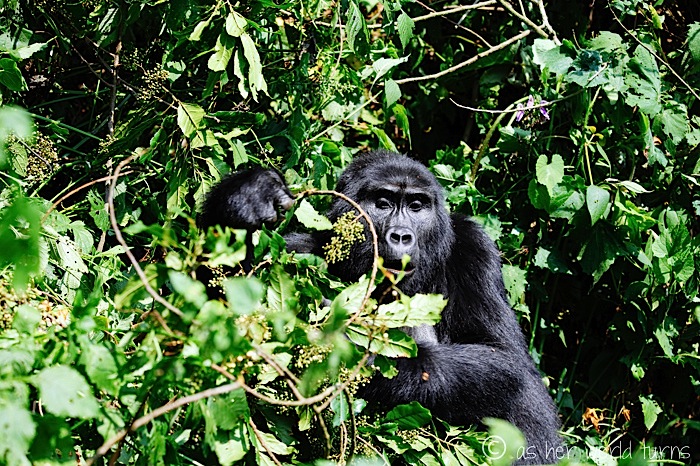
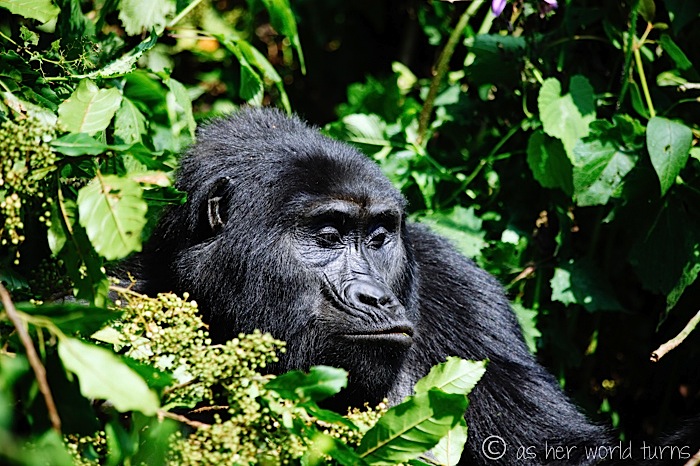

True story: once they finish eating, the mama gorilla takes a swipe at my leg (!) as she rolls down the hill. All of us are standing together in a tight group and I’m on the outside, so she targets my leg. We are standing the minimum distance apart but it must be too close for comfort in this case (especially understandable since her child is with her). The encounter leaves my heart beating a few extra ticks per minute!
We turn around to cover the reverse route back to our starting point.




More worms…
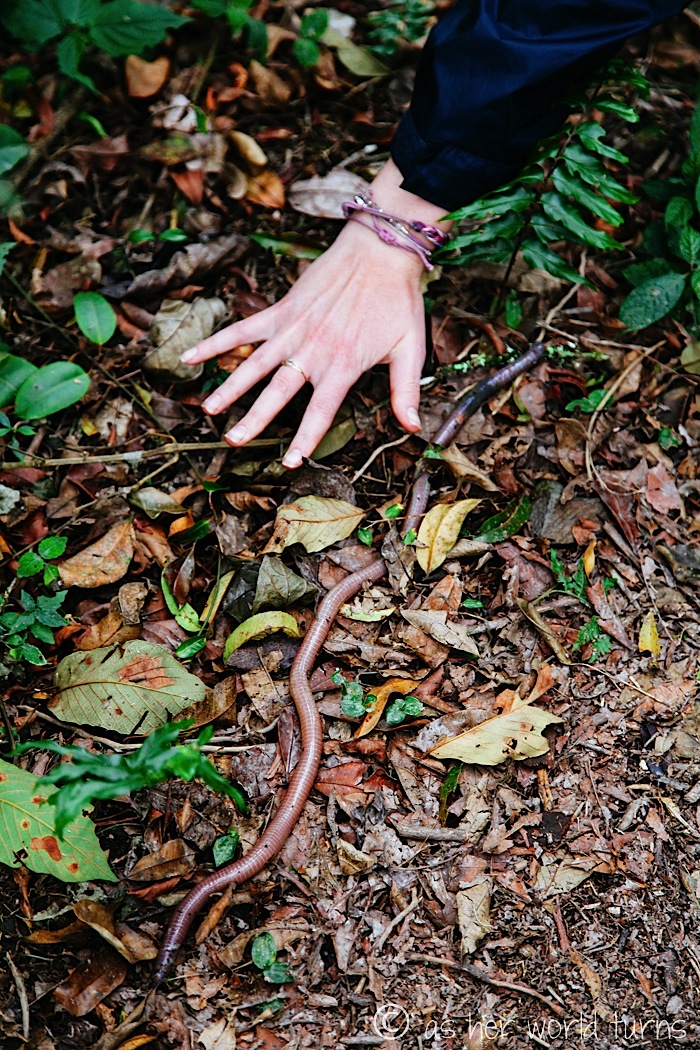
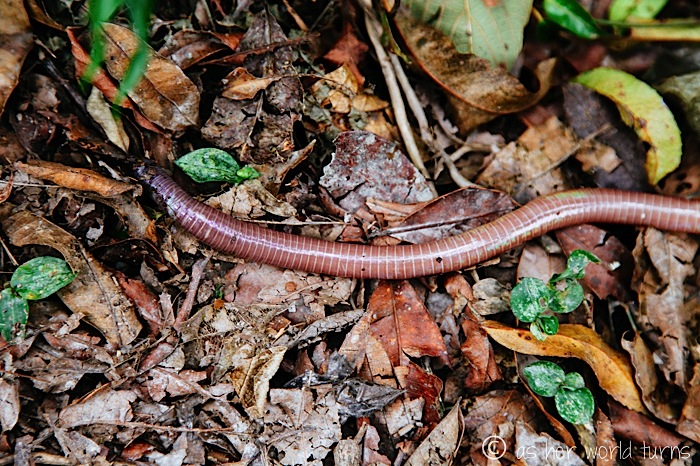
All told, it takes us about 2 hours and 15 minutes each way to get to the gorillas and back. Someone else on our overland tour found gorillas after only 30 minutes! While I’m glad our trek was long enough to feel like we roughed it in the forest, I’m also glad it didn’t end up being eight hours round-trip.
Here’s our group ‘after’ shot:
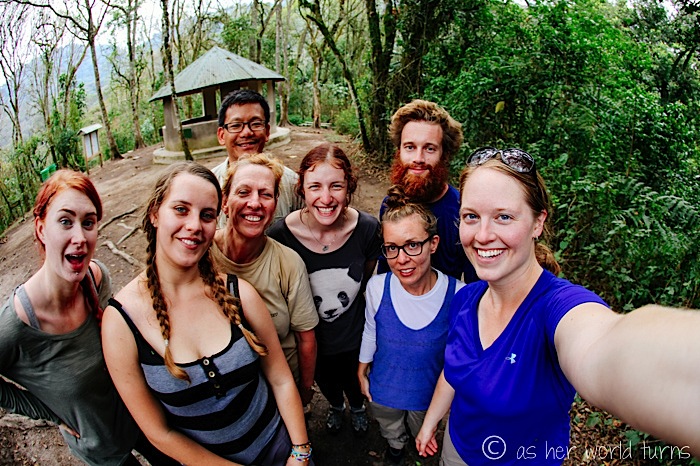
The rangers are completely serious when they hand over our gorilla tracking certificate and implore us to hang it up on the walls of our homes so that our friends might see it and plan their own trips to Uganda.

I’ll leave you with some video footage of these gentle giants.
If you can get to this part of Africa, gorilla trekking is a once-in-a-lifetime experience. My only advice would be to go in the lower season (like September to November) to get a heavily discounted rate. But even at full price, I’m glad I did it. This gorilla trekking write-up is a great resource if you want to plan a similar trip.

